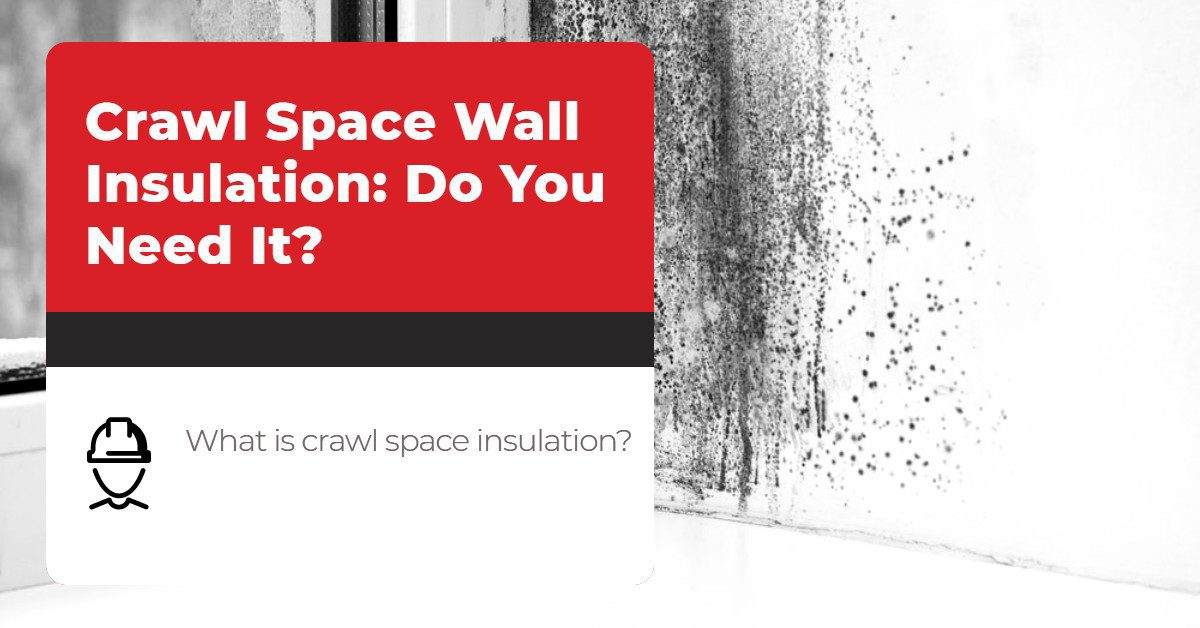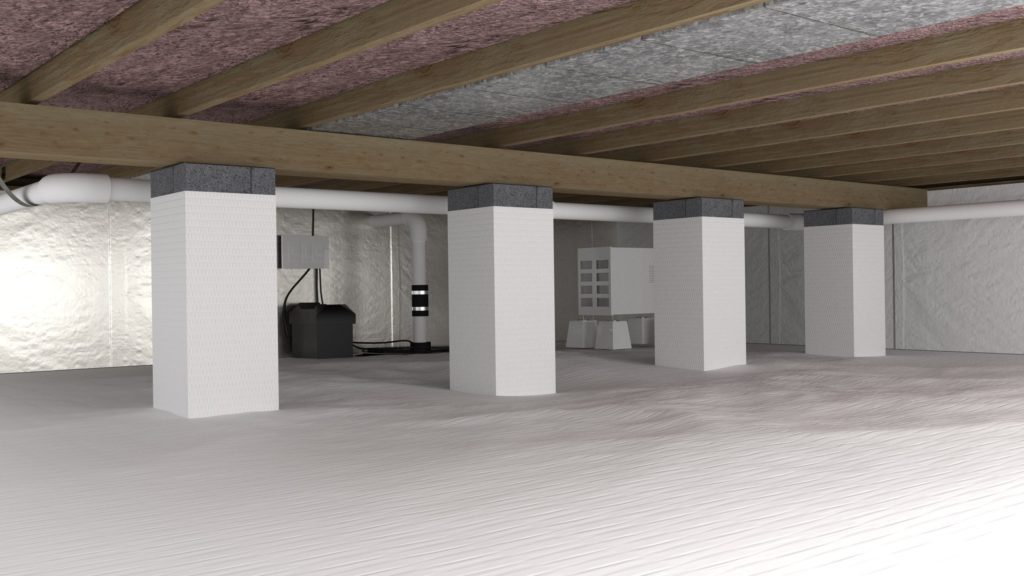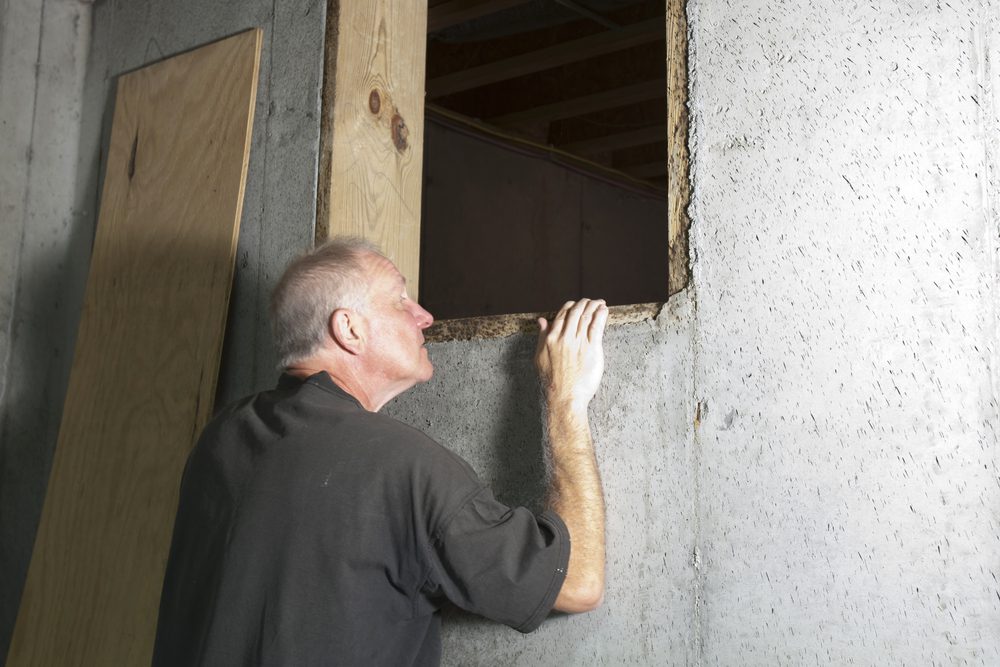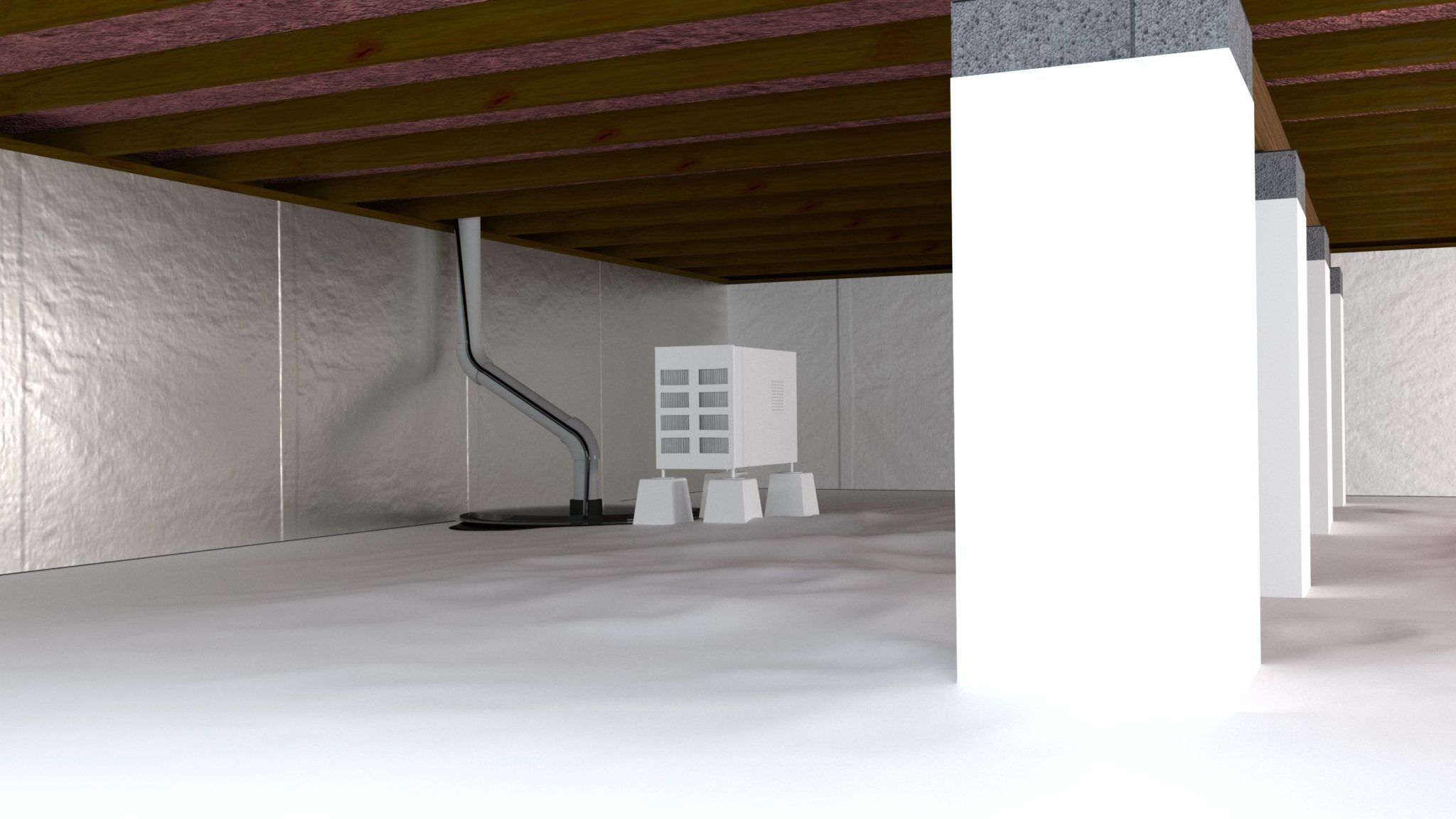What is crawl space insulation? What could happen if you don’t insulate your crawl space? Where do you begin? We will answer all these questions and more in this article. Stick around and find out.
Do You Need Crawl Space Wall Insulation?
The answer is YES! You do need crawl space wall insulation. Without insulation, hot and cool air fluctuates in your home, using your crawl space as an entry and exit point. Insulating your crawl space can help save you money, lowers your home’s energy use, and result in better air quality. Your crawl space is not air-conditioned, so you will have to fight against seasonal temperature changes if you leave it uninsulated.
Effects Of Water In Your Crawl Space
If you leave your crawl space uninsulated and allow water, moisture, or air to build up, you will be asking for problems.
Mold & Mildew – Mold needs at least 70% relative humidity level to grow and thrive. Mold can lead to breathing issues and other nasty side effects.
Water Damage – If you have wooden beams under your home, you do not want water soaking and destroying the structural integrity of your foundation.
Musty Odors – You breathe the air of the floor below you, so you are going to notice a musty smell in your home soon.
Condensation – Once moisture starts to build up, you will begin to see dew inside of your crawl space.
Buckled Hardwood Floors – If you have hardwood floors, and they lay on top of your crawlspace, you may notice they begin to buckle, warp, or bend.
High Humidity – If you live in a southern climate, you are already dealing with intense humidity during the summer. You want to escape the heat when you enter your home, but what if the air below you pumps out humidity levels higher than outside?
Insect Infestations – Bugs and other creatures like sewer flies love water. If you have puddles in your crawl space, you might notice an increase in unwelcome critters.
Wood Rot – Do not let your wood floor beams become damaged due to wood rot. Once you have foundation issues, you are talking about more than just crawl space repairs.
How To Insulate Your Crawl Space
To ensure your crawl space is completely insulated, several solutions work best together. Let’s start with the first solution, crawl space encapsulation.
Crawl Space Encapsulation – Crawl space encapsulation is when a vapor barrier is placed inside your crawl space. A vapor barrier is a thin layer of impermeable polyethylene sheeting that prevents moisture diffusion through the basement wall, and this keeps humidity in your crawl space to a minimum.
Crawl space vapor barriers are the first line of defense against high humidity and poor indoor air quality. These encapsulation barriers are 10 to 20 mil thick, puncture-resistant, and made of a high tensile strength material that stops soil moisture from entering the space. These liners encapsulate the crawl space so that moisture cannot attack exposed wood and create mold and mildew.
Crawl space sealing prevents the humid air from settling in the space, creating condensation and promoting mold growth. Many studies have proven that a sealed crawl space creates a healthier and more energy-efficient home due to the elimination of humidity fluctuations.
Crawl Space Sump Pump – A sump pump is a fixture in a home’s crawl space. It helps remove groundwater from underneath your home, preventing water from seeping through your floor. Water or heavy precipitation becomes a significant issue in your home without a sump pump (which sits in the sump “pit”). Sump pumps are also used to keep basements dry.
Dehumidifier – As a warning, you do not need a dehumidifier if your crawl space is vented. Otherwise, you will be just constantly dehumidifying outside air.
A crawlspace dehumidifier is installed in the encapsulated crawl space, positioned for optimum air circulation. Its fan circulates the clean, dry air throughout the area, keeping crawl space humidity levels down.
Crawl Space Vent Covers – Crawl space vent covers are a good idea for sealing vents that cause more problems than they were meant to. Crawl space vents had a purpose, but now closing them has been the recommended solution.
So if you have a crawl space and notice you have vents, what should you do? Building codes generally require working vents in the crawlspace to allow outside air to circulate under the floor in the summer to prevent moisture buildup.
Read more about – How to lower crawl space humidity.
When air is drier in the winter, the vents are closed to lower the chance that the pipes in the crawlspace freeze. So one answer could be to open them during the summer and close them during the winter. Now keep in mind, most experts recommend closing them entirely to keep the humidity in your crawl space below 60%.
Why The Methods Work Together
When you combine each insulation solution, you create the ultimate seal.
- The vapor barrier prevents condensation from sticking to walls or wood.
- The sump pump sends any water buildup out.
- The dehumidifier keeps the humidity low in return the temperature feels lower.
- And lastly, closing any crawl space vents keep outside air out.
Who Can Help With Crawl Space Insulation
If you need help keeping your crawl space clean and dry, who should you call? Whether it’s using vent covers, encapsulation, a sump pump, or a dehumidifier, who should you call? Check out Foundation Professionals of Florida, an award-winning and top-performing company. We specialize in all your crawl space, foundation, and slab repair needs and can provide any of the services above.




